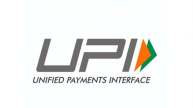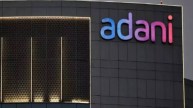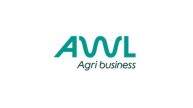Fixed deposits have long been a favourite investment option for individuals seeking capital safety, predictable returns, and liquidity. However, in situations where immediate cash is required, breaking a fixed deposit prematurely may not always be the wisest choice. This is where a loan against fixed deposit becomes a valuable alternative. It allows deposit holders to access funds without disturbing their investment or forfeiting interest earnings.
Before applying, it is crucial to understand the eligibility criteria and conditions that govern such loans. This article outlines the essential rules, applicable charges, and how the loan against FD interest rate is determined.
What is a loan against fixed deposit?
A loan against fixed deposit is a secured credit facility wherein the deposit holder pledges their FD with the bank or financial institution to borrow money. Instead of breaking the deposit, a lien is marked, allowing the bank to recover the loan from the FD if the borrower defaults.
The loan amount is typically a percentage of the deposit value and is repaid in monthly instalments or through an overdraft mechanism. Since the deposit is already with the lender, the process is fast, involves minimal documentation, and is generally free from stringent credit checks.
Who is eligible for a loan against fixed deposit?
Eligibility for a loan against fixed deposit largely depends on the type of fixed deposit account and the applicant’s relationship with the bank. Although most individuals with valid deposits are eligible, several rules apply.
- -The applicant must be the primary holder or joint holder of the fixed deposit account.
-The fixed deposit must be with the same bank or institution that is offering the loan.
-The deposit must be in active status, not prematurely withdrawn or closed.
-Most banks allow resident individuals, HUFs, senior citizens, and minors (through guardians) to avail the loan facility. - -In case of joint fixed deposits, all holders must sign the loan agreement or provide written consent.
- -FDs held by non-individuals such as companies or firms may also qualify, depending on the bank’s lending policy.
- It is important to note that tax-saving FDs under Section 80C with a five-year lock-in period are not eligible for loans during the lock-in tenure.
Minimum and maximum deposit values
Each bank or NBFC sets its own limits for the minimum fixed deposit amount required to qualify for a loan. However, common thresholds include:
- -A minimum FD value of Rs. 10,000 to Rs. 25,000 is generally required for personal fixed deposit loans.
-For corporate or higher-value loans, banks may require deposits of Rs. 1 lakh or more.
-The maximum loan amount is typically 90 percent to 95 percent of the FD value, depending on tenure, deposit size, and internal policies.
For example, if you have an FD worth Rs. 5 lakh, you may receive a loan ranging from Rs. 4.5 lakh to Rs. 4.75 lakh without needing to liquidate the deposit.
How the loan against FD interest rate is calculated
The loan against FD interest rate is one of the key advantages of this facility. Since the loan is backed by the fixed deposit itself, lenders charge interest at a margin over the FD rate.
- -Most banks add 1 to 2 percent to the existing FD interest rate to determine the loan rate.
-For example, if your FD earns 6.5 percent per annum, the loan might be priced at 7.5 percent to 8.5 percent per annum.
-Some banks offer even tighter spreads for senior citizens, long-term customers, or high-value depositors. - -Loans provided via overdraft carry interest only on the utilised amount, not the entire limit.
This makes it significantly cheaper than personal loans or credit card borrowing, where interest rates can range from 12 percent to over 20 percent.
Tenure and repayment terms
The tenure of a loan against fixed deposit is closely tied to the maturity period of the deposit itself.
- -The loan tenure cannot exceed the maturity date of the fixed deposit.
-If the borrower fails to repay the loan by the due date, the lender has the right to liquidate the FD and recover dues.
-Repayment can be done through EMIs or overdraft repayment, depending on the chosen loan structure.
-Some lenders allow partial prepayment or full pre-closure without additional charges.
Borrowers must ensure that their repayment plan aligns with the deposit’s maturity timeline to avoid penalties or forced liquidation.
Types of fixed deposits eligible
Not every FD type qualifies for a loan. Most banks restrict the facility to standard domestic term deposits, although others may extend it to select variations.
- -Regular fixed deposits are eligible for loans in nearly all banks.
-Cumulative and non-cumulative deposits are both accepted.
-Senior citizen FDs qualify for the same loan percentage and may enjoy preferential rates.
-Recurring deposits, Flexi FDs, and NRE/NRO deposits may or may not be accepted, depending on the bank’s policy.
-Tax-saving fixed deposits are ineligible for the entire lock-in period.
Applicants should check the bank’s approved list before initiating the process.
Documentation required for eligibility
Though the process is simple, a few essential documents are required to confirm eligibility and process the loan:
- -Copy of the fixed deposit receipt or certificate
-KYC documents such as PAN, Aadhaar card, or voter ID
-Photograph and bank account details for crediting the loan amount
-In case of joint FDs, a signed consent letter or joint declaration may be necessary
-For overdraft facilities, banks may ask for cancelled cheques or debit instructions
Corporate applicants may require additional documents such as a board resolution or authorised signatory proof.
Final considerations before applying
Before applying for a loan against fixed deposit, it is wise to keep the following in mind:
- -Review the loan-to-value ratio offered by the bank to understand how much liquidity you can access.
-Confirm whether the loan is offered as a lump sum or overdraft, and choose based on your requirement.
-Read the terms of interest calculation, especially for overdraft usage, where interest may be charged daily.
-Evaluate whether your FD is earning a competitive rate. If not, pledging it may cost more than expected.
-Ensure you do not pledge FDs linked to tax benefits or retirement planning, unless absolutely necessary.
Conclusion
A loan against fixed deposit offers a practical and low-risk financing option for individuals who require short-term liquidity without disturbing their savings. With minimal eligibility barriers, competitive loan against FD interest rate structures, and simple documentation, this facility proves especially useful during emergencies or temporary cash flow gaps. By understanding the eligibility rules—such as deposit type, ownership requirements, and tenure limits—investors can confidently leverage their fixed deposits to meet financial needs while allowing their investments to remain intact and continue earning interest. Responsible borrowing, aligned with the deposit’s maturity and repayment capacity, ensures that this credit solution remains both convenient and cost-effective.
Also Read: Share Market: Sensex And Nifty Open Almost Flat – What’s Impacting The Equities?












